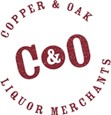 How to talk about beer like an aficionado
How to talk about beer like an aficionado
Your friends have started to notice that you spend longer mulling over the beer list at the bar than usual. You always bring a six-pack of something tasty when you go to a friend’s place. And your social calendar is starting to fill up with beery festivals and tasting nights. It’s official: you’re on your way to becoming a beer lover.
However, beyond the basic knowledge that beer tastes great, you’ve got some serious gaps in your beer-ducation. Well, we’re here to help you master a few of the basics and get you well on your way to the next level of your training becoming a beer master.
GET YOUR FACTS RIGHT
Next time someone shakes their head at you for casually drinking your XXXX Gold while they sip on a vodka soda, and says, Shouldn’t you be watching your figure?, just give them a knowing smile (wink optional). Contrary to popular belief, many brews are low in sugar. So that XXXX Gold? A mere 109 calories per serve. Share that with your mate, and thank us later.
ARM YOURSELF WITH SOME COMMON BEER VOCAB
If you want to sound like the real deal, you need the right words. So waving your hands around and using vague terms like complex and hoppy just aren’t going to cut it. Here’s a few to get you started before you know it you’ll be chatting to the bartender with ease.
Ale v Lager: All beers fall into the category of either an ale or a lager. If it’s not one or the other, you’ve taken a wrong turn somewhere and landed in cider land. Ales like James Squire’s One Fifty Lashes are brewed at a higher temperature with top fermenting yeast and are often fruitier, while lagers are brewed with bottom fermenting yeast for slightly longer, have a crisp, clean taste, and are best served colder, like Kirin Megumi is!
Malty: Almost all beers contain either malted barley or malted wheat, but, depending on how much heat is applied during the roasting process, some beers will turn out more malty than others. Generally the deeper the malts are roasted, the darker and more thicker the flavour, i.e. think beers like Toohey’s Old. Bonus points for substituting malty with terms like biscuity, caramel, coffee or toffee notes.
Hoppy: All beers have hops the leafy flower that gives a beer its distinct bitterness and helps keep it fresher for longer. But the term hoppiness can cover bitterness, flavour as well as aroma, and shouldn’t be used as a descriptor on its own as this magical ingredient can have different layered effects on the final beer, depending on how the brewer uses it. So best to do some research beforehand (read: taste testing).
IPA: To put it in terms anyone could understand, IPAs are a real beery beer. This beer characteristically has a higher alcohol content and has loads of hops added to it. These types of beers originated from the olden days when beer needed to survive the long voyage from England to India, hence the name India Pale Ale. Try Little Creatures IPA for a hop-packed brew with hints of citrus, aniseed and light caramel flavoured flavours.
KNOW YOUR IBUS
IBUs refer to the level of bitterness in a beer. The higher the IBU the more bitter the beer a pilsner like Little Creatures Pilsner falls in at about 40 IBUs, while some beers can be anywhere from 60-120. We’d suggest working your way up to the higher level.
But this is just the beginning don’t let your knowledge stop there! Continue to explore the fascinating world of beer and you will soon achieve master status.
Content developed in partnership with Gourmand and Gourmet: An online food publication dedicated to showcasing the tastiest food and drinks Brisbane (and beyond) has to offer.
Want to find out how our beer Ambassadors can help your venue and make the most of our beer knowledge?









